Xiaomi Mi 11
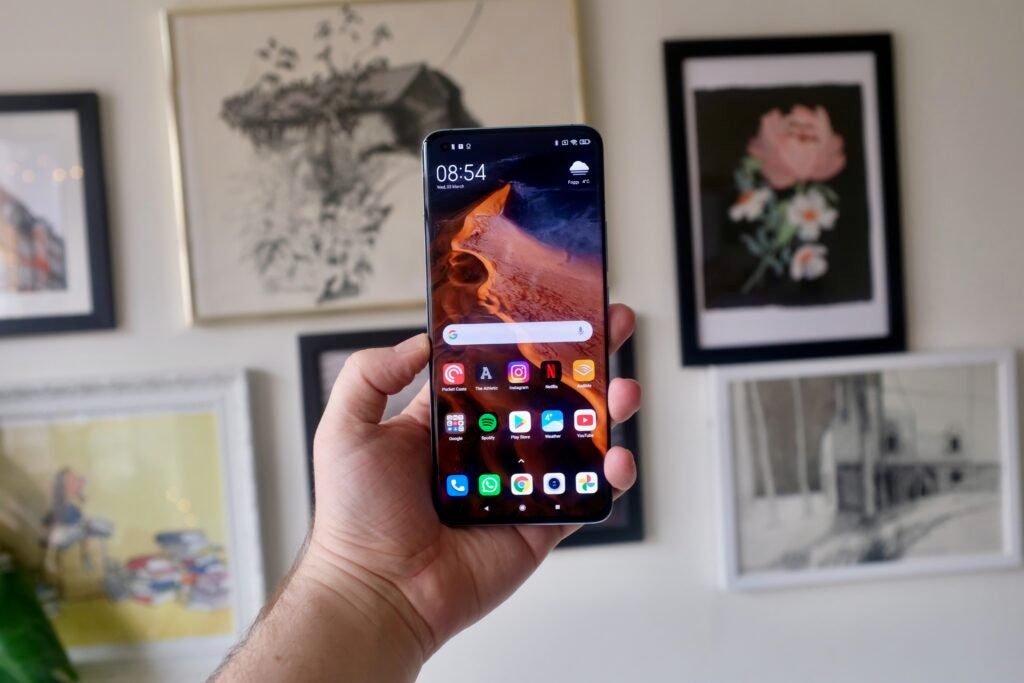
The Xiaomi Mi 11 is a top-tier flagship at a price that undercuts the current headline releases from Apple and Samsung.
If you’re on the lookout for a Snapdragon 888-toting 5G smartphone with a generously sized high-resolution 120Hz display, with less than a grand to spend, then the Mi 11 should be at the top of your list.
On paper, at least, the Mi 11 appears to offer more than the Galaxy S21 and iPhone 12. But in use, can it match the best phones and best Android phones?
Xiaomi Mi 11 price and availability
There’s no official US or UK pricing for the Xiaomi Mi 11 right now, sowe’ll be basing this review on the confirmed European pricing. The 8GB/128GB model is priced at €749, which is a very tempting price for what’s on offer. A conversion puts that at £647 and $902.
There’s a 256GB model, too, which will go for €799. Considering the device doesn’t carry a SD slot, you’re probably better opting for the 256GB model just to be on the safe.
UK availability is expected in the coming months. Whether it will be available in the US officially seems unlikely.
Xiaomi Mi 11 design and screen – A stunning display for the price
- 6.81-inch OLED display is big, colourful and a standout feature
- The lack of IP rating is a shame
- 120Hz panel with sharp 1440 x 3200 resolution
A few years ago, the notable feature touted by every phone maker on new devices was its camera. Now, it seems, it’s a high-tech display.
The screen tech used by Xiaomi on the Mi 11 is high-end in just about every way – an OLED panel with 1440p resolution, adaptive 120Hz refresh rate and brightness levels that, to my eye, match the far pricier Samsung Galaxy S21 Ultra in regular use.
Considering this is a €749 device, I’m impressed. Load up an episode of HDR-supported content on Netflix and you will be, too. Colours pop, blacks are mostly perfect, and the large 6.81-inch display size makes all content super- immersive. Close-up viewing of some dark scenes may reveal a degree of crushing of blacks, but you’ll only see this if you go looking for it.

Like Samsung’s S21 line, the refresh rate here is adaptive, changing rates depending on the task at hand. A faster refresh rate, 120Hz for instance, results in smoother scrolling, while a lower one saves battery when you’re watching videos.
Xiaomi’s software – something I’ll cover in detail further on – does its best to hamper the quality, however, consistently pulling the brightness down to levels that require me to manually increase them.
Of course, a large screen means this is a sizeable phone. It’s comparable to the iPhone 12 Pro Max and Samsung Galaxy S21 Ultra than their smaller siblings, requiring both hands to clutch it comfortably. Considering this isn’t being marketed as a “Pro” or “Ultra” version, I’m surprised by its size.
Still, at least it’s comparatively light for its size at 195g (slightly less for the Chinese Leather-clad models). It’s slender, too, at 8.1mm, with plenty of curves to give the impression it’s even slimmer.
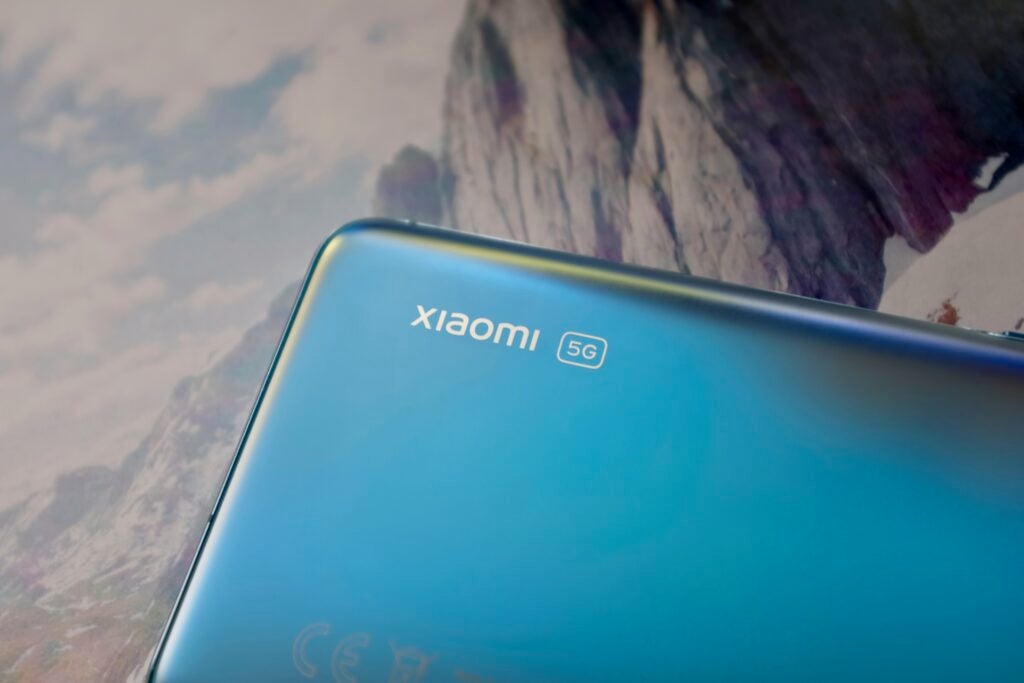
The display, in particular, makes use of curves, not only on the sides but at the top and bottom too. It gives a very smooth feel, making this handset super-comfortable to hold and use. In the past I haven’t really been a fan of the phones sporting a heavy use of curves – devices such as the Huawei Mate 40 Pro, for example – but here they’re applied more subtly, and don’t get in the way.
Both the front and rear of the Xiaomi Mi 11 are covered in glass – Gorilla Glass Victus on the front; Gorilla Glass 5 on the back. A version of the handset available in China swaps the glass rear for leather.
Displaying a matte sheen, the rear is also home to a nicely designed module that houses the camera. There’s a bit of needless 5G branding, too, but overall the design is clean and simple. It looks good. The review unit is in the Horizon Blue hue, which I wouldn’t say is the most on-trend colour; it seems like a shade that would have been popular in 2017. Personally, I prefer the grey version.
Like most Xiaomi phones, the Mi 11 lacks an IP rating, and the internal storage isn’t expandable. The cheaper price of the device can also be seen with regards to finishing touches. For example, the corners of the device aren’t rounded in the same way as the display; the result is they don’t look quite right.
Xiaomi Mi 11 camera – A great main sensor paired with some odd choices
- 108-megapixel main camera can capture great photos
- Less impressed with the 13-megapixel ultra-wide and 5-megapixel macro
- 8K video supported at 24 and 30fps
Xiaomi might be correct in calling the setup on the rear of the Mi 11 a triple-camera array; however, when I hear the term “macro” camera, I tend to discount it from the equation.
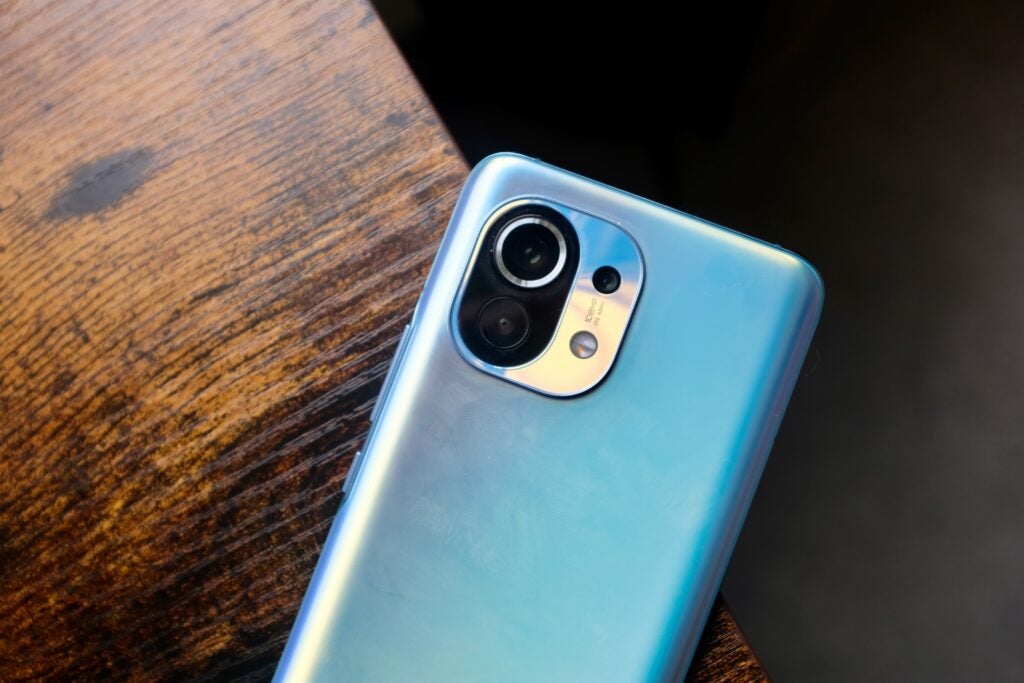
The Mi 11 comes with a main wide sensor, an ultra-wide, and the aforementioned macro unit. There’s no zoom lens of any kind, which is a shame – but acceptable at this price. Around the front sits a 20-megapixel selfie camera housed inside a small cutout.
The main wide camera is the star of the show, and it’s the same 108-megapixel 1/1.33-inch sensor Xiaomi has in other devices. It packs an f/1.9 aperture, OIS along with PDAF for focusing.
As will be the case with all phones that come with 108-megapixel sensors, you won’t typically shoot at that high resolution as the resulting files will be huge and take a toll on processing speed. Instead, the phone uses a technique called “quad-pixel binning”, which combines four pixels into one and spits out 27-megapixel snaps.
You won’t see a significant jump in quality over images taken with Xiaomi’s Mi 10 range of devices, and the Mi 11 isn’t quite up there with the very best cameras phones around. However, it is capable of taking great shots. Colours are nice and punchy and the high megapixel count ensures there’s plenty of detail.



You’ll get your finest shots in bright situations – and in this scenario the Mi 11 can certainly hold a candle to snaps taken on the iPhone 12 and Galaxy S21. It isn’t quite as good in tougher conditions, though, with noise and slow focusing becoming more common.
Switch to the 108-megapixel mode and you’ll see a slight increase in the level of detail, but a lot more noise. The trade-off probably isn’t worth it, unless you’re shooting still subjects on an extremely sunny day.
You can utilise all these megapixels to crop in and zoom 2x, 5x, 10x and 30x, but this is purely digital zoom and the results are limited. Digital zoom is no match for optical zoom offered by varying focal lengths, and it’s a shame that Xiaomi hasn’t added such a camera here.
Shots from the 13-megapixel ultra-wide camera get the job done when you’re trying to jam in more scenery – again, as long as the lighting is good. At night, ultra-wide shots display extreme noise and lack detail.
Compared to some other phones that utilise a dedicated macro camera, the 5-megapixel shots taken with the Mi 11 are actually quite good. If you want to shoot up close and personal and pull out good detail it’s a nifty trick. I’m just not sure it’s deserving of having a whole sensor dedicated to it.

Selfies from the 20-megapixel front camera are very much on the unnatural side, with skin smoothed out. If this is to your taste then you’ll appreciate the results.
Video can be recorded in a variety of resolutions up to 8K at 30fps. I’d recommend sticking to the 4K; the results here are a little more pleasing to my eye – and 8K just takes up so much space.
Xiaomi Mi 11 Performance – Our first taste of the Snapdragon 888
- One of the first phones to ship with the Snapdragon 888
- Very powerful 5G chip that can handle everything you throw at it
- 8GB of RAM and 128 or 256GB of storage
Xiaomi might have made sacrifices in some areas; however, when it comes to performance, this is a full-on flagship device. The Snapdragon 888 chipset is paired with 8GB of RAM (a 12GB version is also available in some regions) and either 128 or 256GB of fast UFS 3.1 storage. It’s 5G and Wi-Fi 6 capable, too, if you have access to the right gear.
I ran a number of benchmarks on the Mi 11, and the scores it achieved are right up there with the very best phones out there – getting close to the iPhone 12 in some aspects and matching the Exynos Galaxy S21 Ultra. The handset lived up to these benchmarks results in real-world use, both in gaming and general day-to-day productivity.
Gaming on this handset is a particular joy, since the 480Hz touch input rate (which basically means the screen captures your finger movement 480 times per second) means your button presses will be relayed very quickly.
The fast chip paired with the fast display makes for a smooth experience that’s only really let down by some issues with the software.
Xiaomi’s MIUI skin, which here sits over Android 11, is heavy – and, during the review period, I found it buggy and unreliable. Apps would crash; the wallpaper would randomly change itself; and notifications would take significant time to appear. For instance, I’d get an alert through the WhatsApp web app that I had a message waiting, without the phone doing anything. This would usually then be followed by multiple alerts 20 to 30 minutes later.
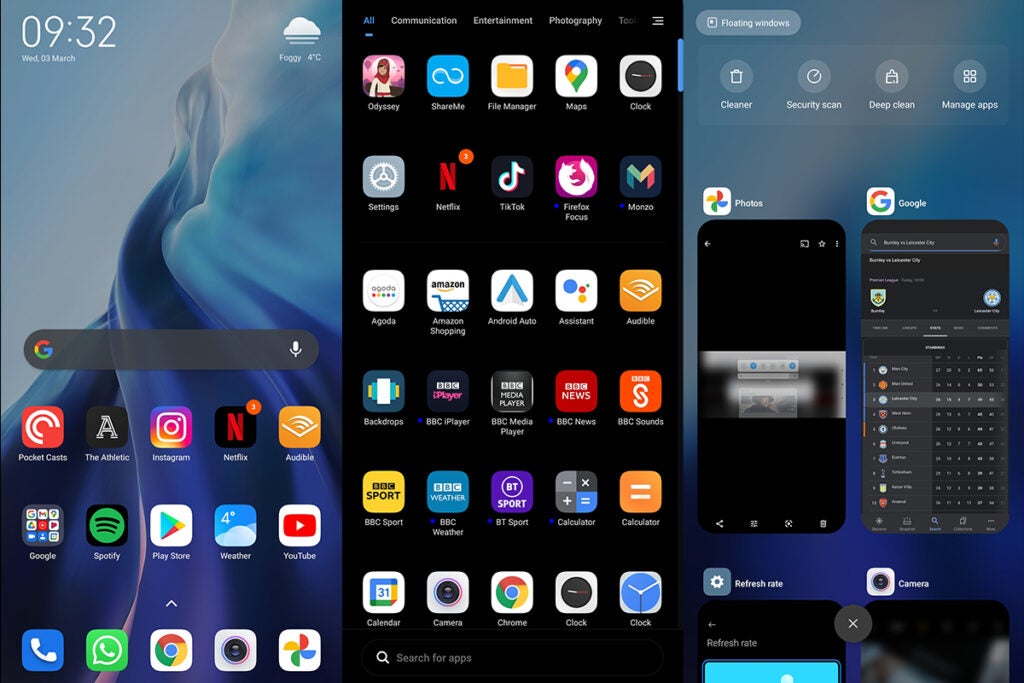
Xiaomi’s overall design is clunky, too, with the multitasking menu having been changed but presenting no clear benefit. In addition, there are far too many duplicate apps that can’t be removed. I do welcome the ability to pop apps into small windows; however, trying to convert these back to full-screen apps rarely worked as expected. It’s all just a bit of a mess and does detract from the overall experience somewhat.
Also frustrating is the fact that it doesn’t appear Xiaomi is using the full power of the Snapdragon 888. A new feature added to this chip was supposed to offer smooth switching between camera lenses – but here there are still hefty stutters as you move through them.
An update to MIUI 12.5 is coming, which might fix some of the issues – but in its current state, you’ll have to spend a bit of time getting used to the Xiaomi way.
In terms of audio quality, the Mi 11 impresses with a decent sounding stereo speaker and capable microphones.
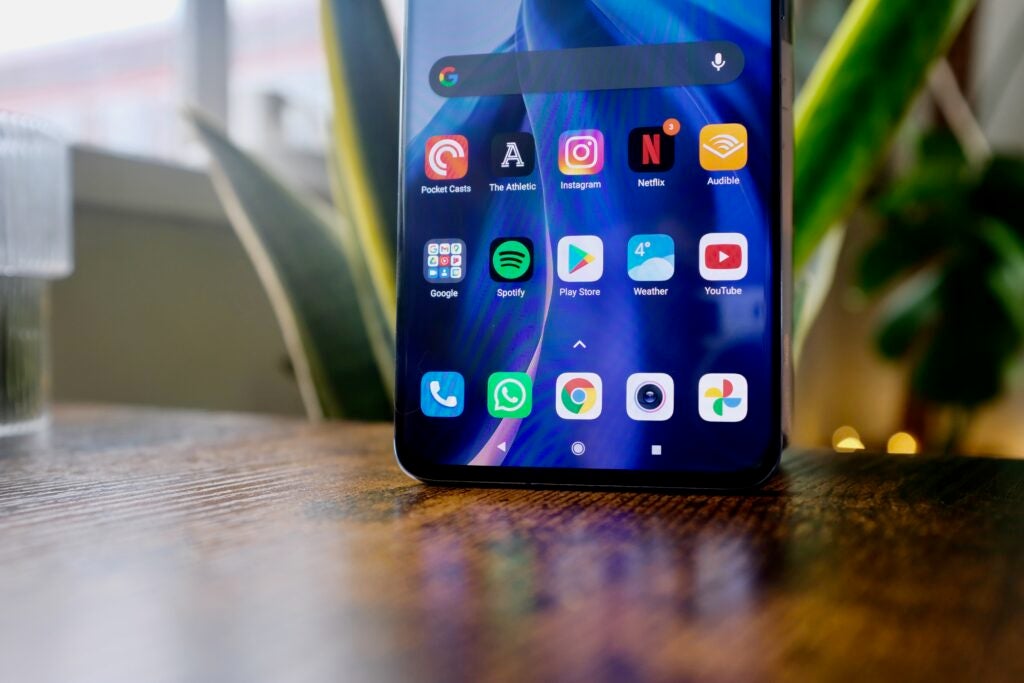 Xiaomi Mi 11 battery life – Big battery and very quick charging
Xiaomi Mi 11 battery life – Big battery and very quick charging
- large 4600mAh battery
- 55W charging with the included plug
- 50W wireless charging offered, too
Size-wise, 4600mAh sits on the larger end of phone batteries, so I was expecting the Xiaomi Mi 11 to be left with plenty of battery life after a long day, even perhaps getting a good part of the way through day two before requiring a top up. Following a few weeks of use, this hasn’t really been my experience.
The Xiaomi Mi 11 has easily made it through a day; however, on the majority of days I was left with less than 10% of juice. This would then be completely depleted in the morning, if I hadn’t plugped it in. Typically, with the iPhone 12 Pro Max or Samsung Galaxy S21 Ultra, I’m closer to 20% at the end of a busy day.
I’ll caveat this by saying that these figures are with use over Wi-Fi, with no 5G use at all. If you’re moving between networks frequently then you might see even more of a drop.
An hour of Netflix HDR streaming consumed 12% of battery life, which is a lot more than the same test run on any of Samsung’s newest phones.
Of course, you can stretch battery life out further if you tweak the settings, keeping the brightness down, and sacrificing either the 1440p resolution or the 120Hz mode – which got me an hour or so extra per day.
Where the Xiaomi Mi 11 does present a comfortable lead over the S21 Ultra and iPhone 12 series is charging. Not only is a charger included in the box, but with a max 55w charge speed, you can go from 0-100% in about 43 minutes. An 80% charge will take a little over half an hour.
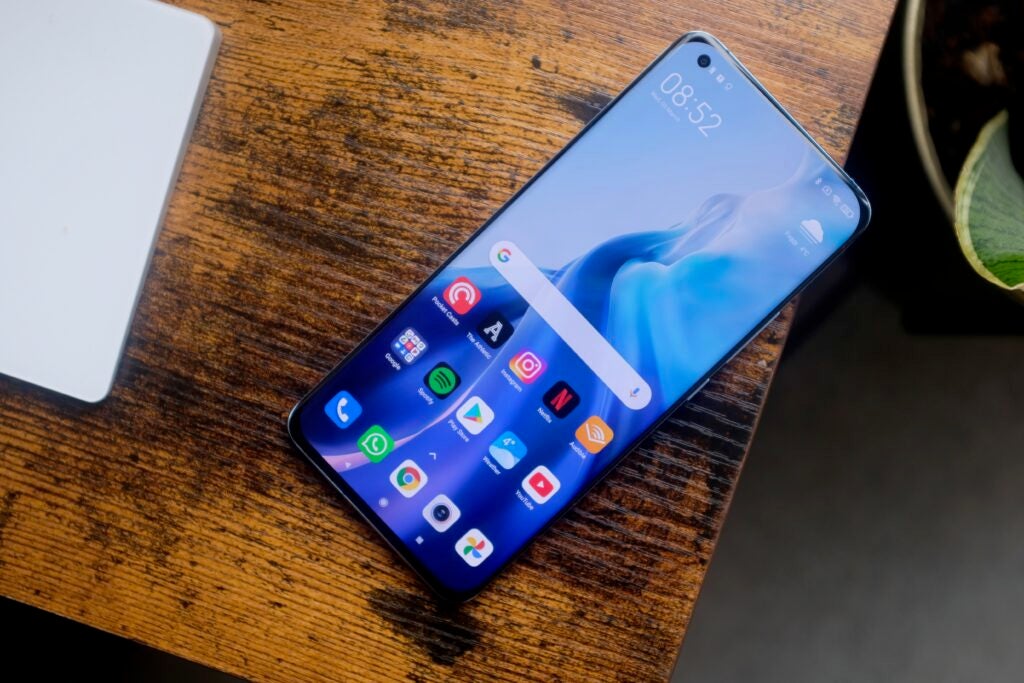
Wireless charging is available, too, with Xiaomi touting 50W speeds. That sounds incredibly fast, but finding a suitable pad may prove tricky.
Xiaomi Mi 11 Conclusion
There’s so much good stuff here. From the screen to the performance and the quick charging skills, Xiaomi is offering a lot for the money. If the software experience was just that little bit better this could easily be one of the easiest to recommend Android phones.
You should buy the Xiaomi MI 11 if…
You want a seriously snappy phone
Getting a Snapdragon 888 chipset for this price is fantastic, and the Mi 11’s performance is among the best you’ll find outside of the iPhone 12. Pair that fast chipset with 5G support and a 120Hz display (with 480Hz polling), and you’ve got a speed champion.
A big, excellent screen is key
For the price, there isn’t a better screen around. The Mi 11’s display beats the S21 and S21 Plus for size and resolution, and includes mod-cons such as HDR, 120Hz refresh and plenty of brightness.
You shouldn’t buy the Xiaomi Mi 11 if…
You want reliable software
Xiaomi’s take on Android is both buggy and a little ugly. There are too many apps duplicating functionality, too, and it can make everything feel a bit heavy.
A zoom camera is a priority
There’s no dedicated zoom camera sensor here, so if you want to achieve excellent results shooting from afar then this isn’t the phone for you.
The post Xiaomi Mi 11 appeared first on Trusted Reviews.
Source Trusted Reviews ,Home Appliances Reviews

No comments